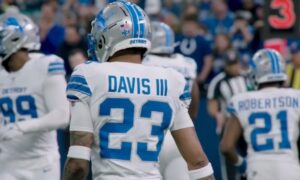No matter how good your team may be doing, there will always be a vocal cross-section of the fan base that, at any given point during the season, is already looking at who their favorite team should be drafting the following spring.
The Pittsburgh Steelers fan base is certainly no exception, and, though they finally went 11-5 and won their division, even the most diehard fan could not deny that the organization has some holes to fill.
While the offense improved, and is on an upward trajectory, there are still tweaks to be made, and successors to be found. The defense has struggled, and is switching coordinators, which may call for a slightly different type of player.
So we’ll take a look at the Steelers roster position by position in the early offseason to determine how each group stacks up in terms of draft need. The next position to go under the microscope will be the tight ends.
Heath Miller: Still solid. Still a workhorse. But how much is there left in the tank? This could very well be Miller’s last season. If not, the year after will be. He can play as many snaps as needed, from as many positions on the field as necessary, but he is clearly past his prime. He has slowed down, and is not quite as reliable as he once was, but remains a solid top tight end option, with the understanding that a changing of the guard will soon be necessary.
Matt Spaeth: An asset in the running game. The Steelers will likely re-sign Spaeth, but he, too, is getting up there in age. He is rarely used as a receiver, but is capable of contributing in that area. The Steelers just have so many other targets that it’s not necessary. He is the run blocking tight end, and he does it well.
Michael Palmer: Just a guy. But a guy that they seemingly can’t get rid of. Palmer does nothing special, but does a bit of everything, and does it slightly better than most fringe NFL-quality players, so he has stuck around. He will likely be re-signed, but the Steelers should give him more competition this offseason.
Will Johnson: I’m including Johnson among the tight ends because the Steelers used him there more than as a fullback. It’s just the way the offense is run now. He found most of his success as a run blocker, but they found little opportunity to take advantage of his receiving abilities. There aren’t enough targets to go around.
Rob Blanchflower: Could he force his way onto the roster in his second season? He has the makings of a prototypical two-way tight end who can do a bit of both blocking and catching. He’ll have the offseason to show himself.
Draft Strategy: The needs at the tight end position for the draft apply more to the future than the present. They have a sufficiently talented group of tight ends already, but their top two are aging. What type of ceiling Blanchflower may have—if he even makes the roster—remains to be seen. They have signed Michael Egnew, a third-year player, to a futures contract, to add competition. Realistically, a tight end could be drafted in just about any round, but you would figure they would like to add one through the draft regardless of where it comes from.








